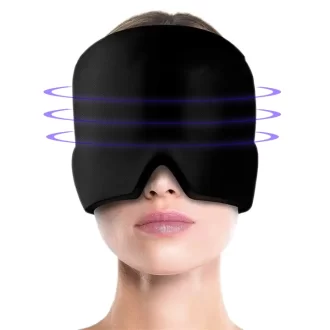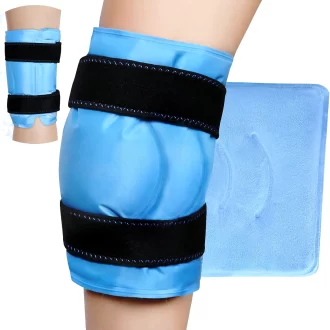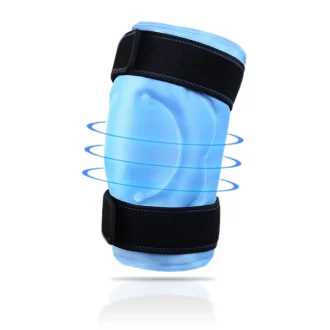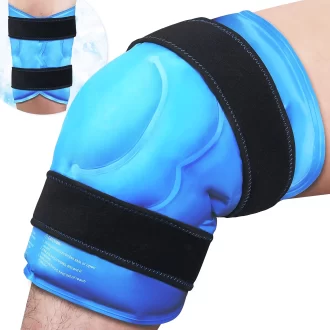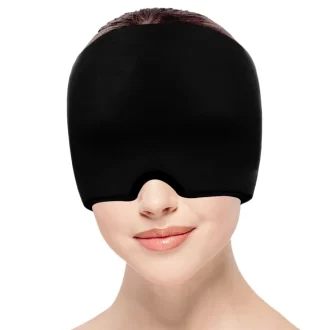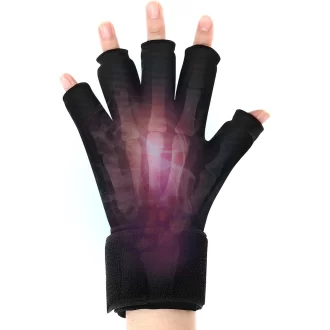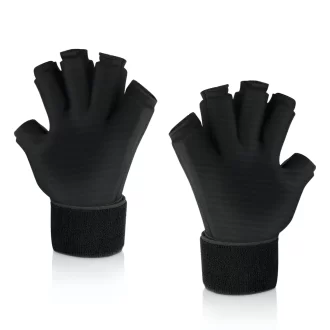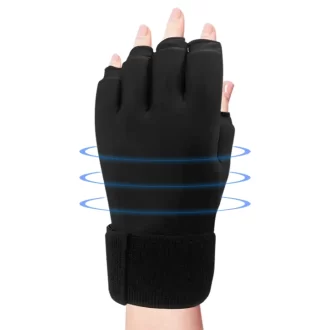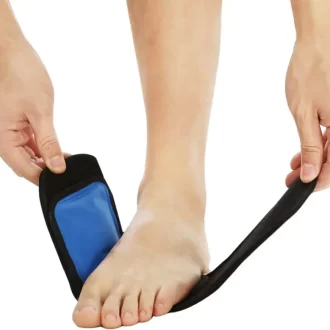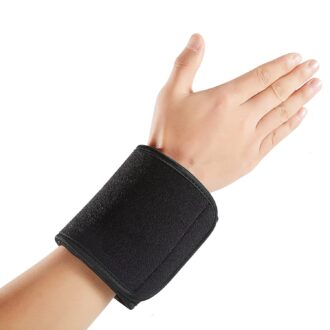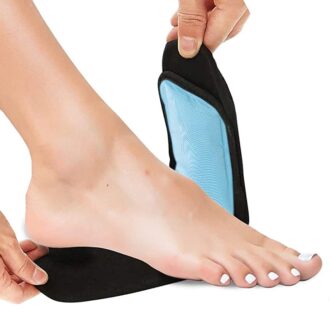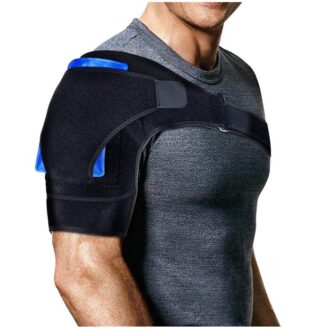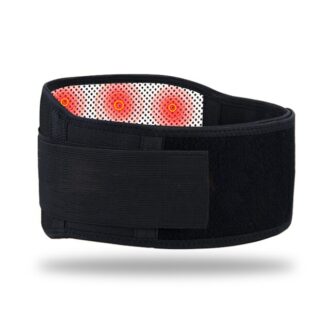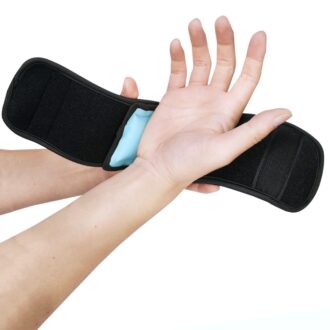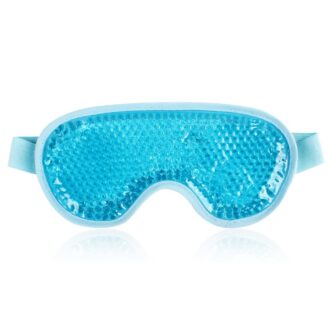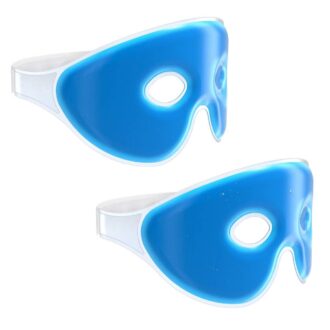No products in the cart.
Hot And Cold therapy
Headache & Migraine Relief Cap
- Introducing the NuovaHealth Headache & Migraine Relief Cap – Have you been grappling with relentless headaches or migraines? Do you feel as though you’ve tried everything, yet nothing seems to ease the pounding or throbbing in your head? We have good news for you! We’ve designed a unique product to quickly and effectively provide the relief you desperately need. Introducing our new NuovaHealth Gel Relief Cap, a perfect solution for both men and women suffering from migraine and headache woes.
- 360-Degree Relief – This isn’t your average relief cap; it’s been uniquely designed to provide 360-degree coverage of soothing cold and heat therapy for your head, ensuring you can tackle your migraines from all angles. Cool it down quickly in the fridge or freezer for a refreshing, icy relief or heat it up in the microwave, for a warm, comforting experience. Our cap is crafted with a specially formulated gel that retains its temperature far longer than conventional migraine caps, providing longer, more effective relief.
- The Science behind Cold and Heat Therapy – Cold and heat therapy has been used for centuries to treat various forms of aches and pains. When applied to the head or face, it can have numerous benefits for migraine sufferers. Cold therapy works by constricting blood vessels, reducing inflammation and numbing the pain, while heat therapy dilates blood vessels, increasing blood circulation and providing soothing relief.
- Provides gentle soothing compression – But, our Migraine Relief Cap does more than just temperature therapy. It also provides gentle compression, a technique known to reduce inflammation and swelling, ease aches and pains, and accelerate the recovery process of damaged tissue.
- Comfort Meets Practicality – Our Migraine Relief Cap is made from ultra-soft fabric that is not only comfortable but is also breathable, moisture-wicking, and has antibacterial properties. This ensures that no matter how long you wear the cap, you’ll remain fresh and comfortable.
- Beyond Migraine Relief – Our cap has been designed with flexibility in mind. You can pull it down to cover your eyes, acting as a sleep mask, blocking out sunlight for a restful night’s sleep. This feature, combined with the soothing cold and heat therapy, can help reduce the appearance of puffy, tired eyes, ease sinus pain, and even alleviate hay fever symptoms.
- To sum up, our NuovaHealth Migraine Relief Cap isn’t just a product; it’s a holistic solution to migraines, providing relief and comfort to let you get on with your day free from pain!
£18.99£22.99inc VATHot & Cold Compress Therapy Ice Pack Wrap
- Introducing Our Hot & Cold Compress Therapy Ice Pack Wrap – There’s nothing more debilitating than an injury. It slows you down, causes constant discomfort, and disrupts your everyday routine. That’s why at NuovaHealth, we’ve developed an innovative solution to help manage your pain and speed up the recovery process. We present to you our hot & cold compress therapy ice pack wrap.
- Experience 360-Degree Relief: Our therapy ice pack wrap is designed to provide full 360-degree coverage and relief. No matter if it’s your arm, elbow, knee, or leg that’s hurting, our one-size-fits-all, easy-to-use wrap is here to help.
- Easy & Fast to Use: Simply cool it in the fridge or freezer for 20 minutes, adjust the straps to fit your body, and you’ll soon be experiencing the soothing effects of cold therapy. This process is known to enhance blood flow to the injured area, delivering oxygenated blood to damaged tissues, and reducing inflammation and swelling.But the benefits don’t stop at cold therapy. Our versatile wrap also doubles as a heat compress. Heat it in the microwave, apply it to your knee, and let the heat therapy work its magic. The unique gel that we use in our wrap retains its temperature, hot or cold, for an extended period, providing effective, long-lasting relief.
- The Power of Soothing Compression: Apart from alternating between hot and cold therapy, our ice pack wrap also offers consistent compression to your injured body part. The science behind this is simple – the compression boosts circulation, eases inflammation, and accelerates the natural healing process. It’s this combination of hot and cold therapy with compression that makes our therapy wrap a powerful tool in injury treatment.
- Trusted by Professionals: Our ice pack wrap is not just a product; it’s a solution trusted and recommended by medical professionals globally. Physiotherapists and doctors often suggest our wrap for the treatment of various injuries and conditions, including but not limited to sprains, strains, and general aches and pains.
- So, if you’re in need of a reliable, effective, and easy-to-use solution for managing your injury, our hot & cold compress therapy ice pack wrap is the product for you. Be it for easing discomfort or speeding up your recovery, we’re here to make your journey towards better health a little easier. At NuovaHealth, we are committed to your wellbeing, and we believe our therapy wrap is a step in the right direction.
£22.99£24.99inc VATGel Elbow Ice Pack Wrap for Elbow Pain Relief
- The Ultimate Solution for Elbow Relief Pain & Injuries: Introducing our Elbow Ice Pack Wrap, a one-size-fits-all innovative solution for those suffering from elbow pain! This versatile wrap is specifically designed to address a plethora of elbow and arm conditions such as Elbow Tendonitis, Tennis Elbow, and Cubital Tunnel Syndrome, to name a few. It’s also remarkably effective in treating bone fractures, elbow dislocations, elbow hyperextension, trapped ulnar nerves, golfers elbow, sprains, strains, and arthritis!
- Cold and Heat Therapy at Your Fingertips: Our Elbow Ice Pack Wrap doesn’t just stop at providing relief. It takes the healing process a step further. The wrap uses cold therapy to help reduce swelling and inflammation while boosting circulation. And if that’s not enough, it also doubles up as a heat pack. Simply, heat it in the microwave for a minute for a soothing heat therapy session. The secret to its dual functionality lies in the specially formulated gel it’s made from. This gel retains its heat or cold temperatures for longer, providing extended relief.
- Embrace the Healing Power of Compression Therapy: But our Elbow Ice Pack Wrap doesn’t stop there. It also provides compression to your elbow and arm. Compression therapy works by promoting blood flow and reducing inflammation. It helps alleviate pain and speeds up recovery by increasing oxygen supply to your muscles.
- Designed for Long-lasting Comfort: Designed with your comfort in mind, the wrap is lightweight and non-bulky, allowing for long periods of wear. Its breathable and skin-friendly materials ensure maximum comfort and minimal irritation.
- Fully Adjustable & Secure: Our Elbow Ice Pack Wrap is equipped with fully adjustable Velcro straps. This ensures a snug fit that stays in place, providing consistent relief without slipping or sliding – an essential feature, especially when dealing with injuries.
- Doesn’t just treat your Elbows: Not just limited to your elbow, this ice pack wrap also lends itself to other injured parts of your body. From forearms and upper arms to lower legs, knees, and upper legs, our wrap offers targeted therapy, no matter the location.
£22.99£24.99inc VATGel Knee Ice Pack Wrap for Knee Pain Relief
- Introducing our Gel Ice Pack Wrap for Knees – a versatile ice pack ideal for both men and women suffering from knee pain or injury. This one-size-fits-all solution is equipped with fully adjustable straps to ensure a perfect fit, providing comfort and stability to your knee.
- Our product is incredibly easy to use. Simply leave it in the fridge or freezer for 20 minutes, then attach it around your knee using the adjustable straps. You’ll immediately feel a 360-degree soothing, cold therapy relief that not only eases your discomfort but provides compression as well. This dual action can enhance blood flow to your knee, delivering fresh oxygen to damaged tissue, reducing inflammation and swelling, and easing aches and pains.
- In addition to cold therapy, our Gel Ice Pack Wrap can also be heated in a microwave to provide heat therapy if required. Our specially formulated gel retains its temperature, hot or cold, for a longer duration compared to other brands, providing sustained relief to your injured knee.
- This ice pack wrap is trusted by medical professionals globally and is often recommended by physiotherapists and doctors for treating a wide range of painful knee injuries and conditions. These include but are not limited to Anterior Cruciate Ligament injuries, Medial Collateral Ligament, Patella Tendonitis, Meniscus tears, Meniscitis (cartilage injury), Iliotibial Band Syndrome, Runners’ Knee, Chondromalacia or Irritated Knee Cap, Osgood Schlatter disease, Osteoarthritis, Rheumatoid Arthritis, Gout, as well as general sprains, strains, aches, and pains.
- We offer a full 30-day money-back guarantee. This is because we want you to feel confident and secure when choosing our Gel Ice Pack Wrap for Knees. So why wait? Give your knee the support and relief it deserves.
£22.99£24.99inc VATHot & Cold Therapy Migraine Relief hat
- Introducing Our Revolutionary NuovaHealth Migraine Relief Hat: Your Drug-Free Solution to Migraines and More! This innovative product is a must-have for both men and women who struggle with regular migraine attacks.
- Experience the Power of Hot and Cold Therapy! The magic of our migraine relief hat lies in its specially formulated gel. This gel can be cooled down in the fridge or freezer for cold therapy, or heated up within seconds in the microwave for heat therapy. Unlike other products on the market, our hat retains its temperature for longer, providing you with long-lasting and effective relief.
- 360 Degrees of targeted Relief! Our Migraine Relief Hat wraps around your head, providing 360 degrees of targeted hot or cold therapy. This feature not only eases migraines but also alleviates sinus pain, reduces muscle tension and inflammation, aids in the recovery of head injuries and concussions, eases stress, and curbs hay fever and heat stroke symptoms.
- A Youthful Glow: An Unexpected Benefit! Wearing our migraine hat doesn’t just relieve pain, it also rejuvenates your skin. By stimulating the muscles around your eyes and forehead, it boosts the production of elastin and collagen in your skin, reduces wrinkles, and evens out your skin tone. The result? A fresher, more vibrant, and younger-looking you!
- Boost Blood Flow and Block Out Light! Our Migraine Relief Hat is designed to provide gentle compression, improving blood flow to your head. Better circulation means faster healing and improved overall health. The hat also blocks out light, aiding in headache and migraine relief, and promoting better sleep.
- Beat the Heat! Our Migraine Relief Hat is also ideal for those hot summer days and heatwaves. Its cooling capabilities offer soothing relief and help prevent heat stroke.
- Comfort, Quality, and Freshness All Day Long! Crafted from high-quality, soft, breathable materials, our Migraine Relief Hat is lightweight and non-bulky. Its moisture-wicking and anti-bacterial properties keep your head sweat-free and fresh, allowing you to wear it for extended periods without discomfort.
- Risk-Free Purchase! We believe in our product, and that’s why we offer a full 30-day money-back guarantee. If it doesn’t work for you, you’ll get your money back. It’s as simple as that.
- Perfect as a Gift! Whether it’s a birthday, Christmas gift, or just because, our NuovaHealth Migraine Relief Hat makes a thoughtful and practical gift.
- Don’t let migraines dictate your life. Choose our NuovaHealth Migraine Relief Hat and reclaim your freedom.
£18.99£22.99inc VATGel Heat therapy Raynaud’s Disease Glove
- Introducing RevitaFit’s innovative Gel Heat therapy Raynaud’s Disease Glove! This versatile glove has been expertly designed to provide much-needed relief and prevention for both men and women battling Raynaud’s disease.
- What sets this glove apart from all the rest is the specially formulated gel lining which can be heated quickly in a microwave. This means that within just 90 seconds, the glove can provide soothing heat therapy to your hands and fingers. This is especially beneficial during a Raynaud’s disease episode when warm blood is restricted from reaching your hands, causing them to get cold. The heat therapy provided by these gloves doesn’t just keep your hands and fingers warm but can also ease aches and pains, stimulate blood flow, and therefore, play a significant role in lessening the effects of a Raynaud’s disease episode.
- The glove can also provide cold therapy as well. You can cool them down in your fridge or freezer and use them to expose your hands to cold therapy, which can gradually improve your circulation over time.
- Wearing the glove will also provide targeted compression. This compression keeps your blood vessels expanded, thus ensuring that blood continues to flow through them. This is crucial for preventing and treating episodes of Raynaud’s disease.
- These gloves are not exclusive to just Raynaud’s disease. The are equally effective for other painful hand and finger conditions and injuries, including Arthritis, Poor Circulation, Neuropathy, Oedema, Carpal Tunnel Syndrome, Repetitive Strain Injuries, Tenosynovitis, Stenosing, Wrist Sprains, and Tendonitis.
- Crafted from high-quality Lycra, the glove isn’t just durable but also enjoys a unique blend of flexibility, durability, and comfort. Lycra, a soft and breathable material, is known for its excellent elasticity and ability to retain its shape, thus ensuring that the glove will provide a snug and comfortable fit regardless of the wearer’s hand size. With an adjustable wrist wrap, you can also quickly and easily secure the gloves at your preferred level of tightness and compression.
- For long-term wear, this glove have been designed to be skin-friendly with antibacterial and moisture-wicking properties. This prevents skin irritation and ensures that you can comfortably wear them for extended periods.
- So, with all that being said take control of your health and comfort with the RevitaFit’s Gel Raynaud’s Disease Glove, designed to provide the relief you deserve!
£24.99inc VATGel Raynaud’s Disease Recovery Gloves
- Introducing our Gel Raynaud’s Disease Recovery Gloves – Start the journey towards better hand health with our innovative Gel Raynaud’s Disease Gloves. These gloves are designed with the utmost care and consideration for both men and women grappling with Raynaud’s disease they offer an unmatched balance of comfort, warmth and compression.
- One size fits all – Features an adjustable wrist wrap to allow you to secure the gloves and quickly and easily adjust the fitting and the level of compression and support to your exact requirements.
- Our gloves do more than just providing comfort; they stimulate blood flow and ease aches and pains, effectively curtailing the effects of Raynaud’s disease episodes.
- They feature a specially formulated gel lining that can be heated quickly, providing immediate warmth to your hands and fingers. Just 90 seconds in the microwave, and you have soothing heat therapy at your fingertips.
- But Wait, There’s More to Them! These gloves can also provide cold therapy! After a brief chill in your fridge or freezer, these gloves can help improve your circulation. Exposure to cold therapy over time can offer substantial benefits to Raynaud’s disease sufferers.
- Not only do these gloves provide hot or cold therapy but they also provide soothing and targeted compression that helps to keep your blood vessels expanded and the blood flowing, which is essential for preventing or treating Raynaud’s disease episodes.
- Crafted from high-quality, skin-friendly materials, our gloves offer durability, breathability, and softness. They come with antibacterial and moisture-wicking properties to prevent skin irritation, allowing you to wear them comfortably for extended periods. The specially formulated gel retains its heat longer, granting you more effective, long-lasting heat therapy.
- These gloves are also ideal for treating and easing other painful hand and finger-related conditions, including arthritis, poor circulation, neuropathy, oedema, carpal tunnel syndrome, repetitive strain injuries, tenosynovitis, stenosing, wrist sprains, and tendonitis.
- We believe in our product, and we want you to as well. That’s why our Gel Raynaud’s Disease Gloves come with a full 30-day money-back guarantee. We stand by the quality and effectiveness of our product, and we want you to experience the benefits with absolute confidence.
- Our Gel Raynaud’s Disease Gloves are a holistic health solution, offering heat and cold therapy, compression benefits, and comfort all in one. Take a step towards healthier hands today!
£24.99 – £44.99inc VATHot & Cold Therapy Gel Ice Arthritis Gloves
- Introducing RevitaFit’s Hot & Cold Therapy Arthritis Gloves – a cutting-edge solution for both men and women suffering from the discomfort of arthritis. These gloves are not just a simple solution, they are a unique medical device that harnesses the healing power of hot & cold therapy. That’s right, with a quick 20-second spin in the microwave, these gloves transform into a soothing source of heat therapy. Alternatively, a placing them in the fridge or freezer equips them with a soothing cold therapy.
- Provides long lasting & effective hot & cold therapy. The hot and cold therapies provided by these gloves are instrumental in alleviating the aches and pains associated with arthritis. The specially formulated gel within these gloves ensures that they retain their temperature, either hot or cold, for extended periods, providing you with long-lasting and highly effective relief.
- But that’s not all. Apart from their thermal properties, these gloves work wonders in aiding the circulatory system. By delivering targeted compression to your hands, they stimulate blood flow, thereby reducing inflammation and swelling. Moreover, this boost in blood flow aids in the healing process of damaged tissue by supplying it with fresh oxygenated blood – an absolute boon for those suffering from hand or finger injuries.
- These gloves aren’t just for arthritis, they are also ideal for a range of hand and finger related conditions. Physiotherapists worldwide recommend these gloves for conditions such as oedema, poor circulation, Raynaud’s disease, hand cramps, repetitive strain injuries, Carpal Tunnel Syndrome, Tenosynovitis, Stenosing, broken fingers and fractures, and wrist sprains. These gloves are specially designed to be worn during the P.R.I.C.E injury recovery protocol, providing protection, ice, and compression to expedite your injury recovery.
- The RevitaFit arthritis gloves are more than just a pair of gloves. They are a comprehensive solution to hand discomfort, promising not only relief but also healing. These gloves are a testimonial to the transformative power of innovation delivered by RevitaFit, bringing you one step closer to a pain-free life!
£24.99 – £44.99inc VATFoot & Ankle Ice Pack Wrap By FootReviver™
- 1x Foot & Ankle Ice Wrap designed to provide soothing hot & cold therapy to ease aches and pains and reduce inflammation and swelling located around your foot and ankle
- For both Men & Women
- One size fits all
- Fully adjustable Velcro strap wraps around either your foot or ankle securely to prevent rubbing or chaffing
- Recommended by Physiotherapists to be used during the P.R.I.CE injury recovery protocol to protect, support, compress and ice and injury to speed up and improve the recovery recovery process
- Specially developed gel retains temperature to provide long last and effective heat or cold therapy
- Can be quickly heated using boiling water to provide heat therapy or cooled in fridge or freezer to provide cold therapy
- Ideal for wearing to help ease a wide range of foot and ankle injuries including Ankle Sprains & Sprains, Achilles Tendonitis, Plantar Fasciitis, Metatarsalgia (ball of foot pain), Bunions, Bursitis, Arthritis, Gout and more!
- Provides soothing compression that helps stimulate blood flow to your foot to promote the natural healing process of damaged tissue, reduce inflammation and swelling and ease aches and pains
- Made from skin friendly and lightweight materials
- Includes a full 30 day money back guarantee for complete customer peace of mind!
£8.99inc VATWrist Ice Pack Wrap for Wrist Sprains, Carpal Tunnel Pain, Arthritis, Tendonitis, Swelling & Bruises
- 1x Wrist Ice Pack Wrap for Wrist Sprains, Carpal Tunnel Pain, Arthritis, Tendonitis, Swelling & Bruises
- For both Men & Women
- One size fits most featuring a fully adjustable secure Velcro strap allowing to to get the right support, compression and fit quickly and easily
- Designed to stimulate your pulse to help reduce your overall body temperature and cool you down in hot summer weather
- Recommended for treating and easing Wrist Sprains, Strains, Tendonitis, Capral Tunnel Syndrome, Muscle spasms and cramps, Arthritis’s, Gout and more!
- Can be worn to provide soothing heat therapy by placing in boiling water or cold therapy by cooling in fridge of freezer
- Specially formulated gel retains hot or cold temperature allowing you to receive long lasting and effective heat or cold therapy
- The ideal solution for speeding up injury recovery, reducing inflammation and swelling and easing aches and pains in your wrist or hand
- Provides compression to help increase blood flow to you hand to promote healing and ease aches and pains
- Great for runners and athletes wanting to avoid injury – Provides heat therapy perfect for warming up muscles before exercising
- Can be wrapped around not just your Hand and Wrist but also your Ankles, Feet, Arms or Elbows
- Includes a full 30 day money back guarantee for complete customer peace of mind!
£8.99inc VATFoot Ice Pack Plantar Fasciitis Wrap
- 1x Foot Ice Pack Plantar Fasciitis Wrap for easing aches and pain reducing inflammation, soreness and stiffness
- For both Men & Women
- One size fits all
- Can be wrapped securely around the arch of your foot or ankle to provide soothing compression, support and hot or cold therapy
- Features removable gel hot & cold therapy ice pack that can be heated in boiling water or cooled in a fridge within minutes
- Specially designed gel retains temperature allowing you to receive long lasting hot or cold therapy whilst wearing the ice pack wrap
- Can be worn during the P.R.I.C.E injury recovery protocol to help ease pain and speed up injury recovery of damaged ligaments, tendons, joints and bones
- Can be worn to help treat and ease Plantar Fasciitis, Metatarsalgia( Ball of foot pain), Achilles tendonitis, Bursitis, Arthritis, Gout and more!
- Great for runners and athletes wanting to avoid injury – Provides heat therapy perfect for warming up muscles before exercising
- Includes a full 30 day money back guarantee for complete customer peace of mind!
£8.99inc VATShoulder Ice Wrap – Hot & Cold Therapy Support Brace
- 1x Gel Shoulder Ice Wrap – Hot & Cold Therapy Support Brace designed to provide extra support and much needed compression to help protect your injured shoulder from further damage, reduce inflammation, soreness, swelling and stiffness, ease aches and pains and improve your injury recovery
- For both Men & Women
- One size fits most
- Features fully adjustable straps that keep the Gel Shoulder Ice Wrap securely in place
- Includes a gel ice pack that can be fitted inside the shoulder brace to provide soothing and long lasting Hot or Cold therapy
- Recommended by physiotherapists for helping treat and ease Frozen Shoulder, Rotator Cuff Injuries, Shoulder dislocations, Bursitis, Tendonitis, Swelling and inflammation, Arthritis, Gout and more!
- Includes a full 30 day money back guarantee!
£17.99inc VATHeating pad for lower back pain
- 1x Self heating pad back brace for lower back pain relief expertly designed and developed by BackReviver™
- For both Men and Women
- Available in a range of different sizes to suit every body type and features fully adjustable straps that give you complete control over the level of support and compression the brace gives you
- Sizes are as follows: Medium: (74-86cm Waistline (29inches-33inches)), Large: (86-100cm Waistline (33inches-39inches)), Extra Large: (100cm-113cm Waistline (39inches-44inches)), XXL: (113cm-119cm Waistline (44 – 47 inches))
– Please note to ensure the best fit measure around your stomach leaving a gap of 2-3 inches for attaching the Velcro strap - Recommended for easing and treating symptoms related to a range of different back injuries and conditions including Sciatica, Slipped & Herniated Disc, Spinal Stenosis, Scoliosis, Spondylolysis, Muscle or ligament strains, Muscle spasms, Arthritis, Osteoarthritis and more!
- Features 20 strategically placed magnets that help provide deep targeted magnetic therapy to soothe and ease lower back pain
- Provides support to your lower back and hips helping to realign your spine and improve your overall posture reducing strain and pressure off your back and prevent back injuries from developing or getting worse
- The soothing compression that this back brace provides will help increase blood flow to your back reducing inflammation and swelling and help to ease back pain and soreness after sustaining a back injury
- Features a tourmaline inner layer that is self-heating and traps and stores your body heat to provide warm soothing and effective heat therapy to your lower back to ease pain
- Made from lightweight and breathable materials that will keep you dry and sweat free
- The non-bulky and discreet design makes this heating pad ideal for wearing underneath regular clothing without excessive bulk
- This item is self-heating which means no batteries or power supply is needed
- Includes a full 30-day money back guarantee for total customer peace of mind!
Warning! Please note this item contains Magnets and so it can potentially interfere with pacemakers, defibrillators, and other medical implants that could be affected by magnets. Do not buy this item if you have an implanted medical device, we cannot be held liable for any damage caused wearing this product.£12.49£14.99inc VATGel Ice Pack Wrap
- 1x Reusable Gel Ice Pack wrap for treating and easing soreness, aches and pains from injury
- Can be wrapped around your Hand, Wrist, Ankle, Foot, Arm or Elbow quickly and easily with the adjustable Velcro strap that holds the ice wrap securely in place and stop it from moving around
- Ideal for PRICE injury recovery protocol – Provides soothing hot and cold therapy as well as compression that helps reduce soreness and inflammation boost circulation and speed up the natural healing process of damaged ligaments, tendons, joints and bones
- Recommended for easing injuries such as plantar fasciitis, Metatarsalgia, Achilles Tendonitis, Arthritis, & Carpal Tunnel Syndrome, Tennis Elbow, Sprains, Strains and fractures
- The specially formulated gel can be quickly cooled or heated and has been made to retain its temperature for longer
- Great for runners and athletes wanting to avoid injury – Provides heat therapy perfect for warming up muscles before exercising
- Can be worn to help stimulate your pulse and reduce your body temperature and cool you down in hot summer weather
- Includes a full 30 day money back guarantee for complete customer peace of mind!
£8.99inc VATCooling Gel Eye Mask
- 1x Reusable Gel Cooling Eye Mask designed to soothe and revive your eyes
- One size fits all – Features an elastic Velcro strap that provides a snug comfortable fit and helps keep the eye mask firmly in place
- Perfect for hot summer days to give your eyes soothing, refreshing and relaxing cold therapy
- Ideal for rejuvenating and revitalizing your eye area for a more youthful appearance
- Eye compress helps boost blood flow to your eye region helping to reduce the appearance of Eye bags, Puffy Eyes, Dark Circles, Swollen and Black eyes
- Long lasting hot & cold therapy treatment – Simple and easy to use. Can be chilled in fridge for cooling cold therapy treatment OR heated in microwave for 10 seconds for soothing heat therapy treatment
- The Gel beads help soothe and ease Puffy and Swollen eyes, Sinus pain, Eyes Strain, Migraines, Headaches and hay fever symptoms
- Made from high quality lightweight breathable materials – The soft plush backing fabric provides an ultra comfortable feel that has been designed specially to not irritate your skin whilst wearing the mask
- Latex-free, BPA-free, and phthalate-free
- Includes a full 30 day money back guarantee!
Warning! The use of our gel cooling eye mask can provide temporary relief from heat and discomfort. However, it is not sufficient to prevent or treat heatstroke. Heatstroke is a serious medical emergency that requires appropriate and immediate action. Special care must be taken when looking after vulnerable individuals, including the elderly, young children, pregnant women, and those with existing health conditions, as they are at higher risk of heat-related illnesses.£9.50£12.99inc VAT2x Hot & Cold Gel Beauty Eye Masks
- 2x Soothing Hot & Cold Gel Beauty Eye Masks
- Provides heat & cold therapy for your eyes
- Simple and easy to use. Place in the freezer or microwave
- Helps ease headaches & migraines
- Reduces the look of tired and puffy eyes
- Includes a full 30 day money back guarantee
£8.99inc VAT
